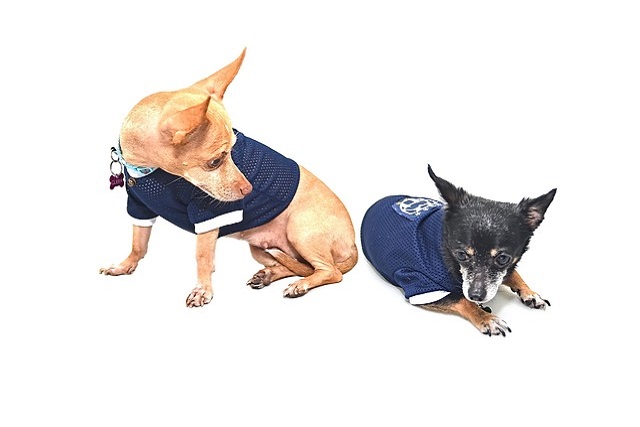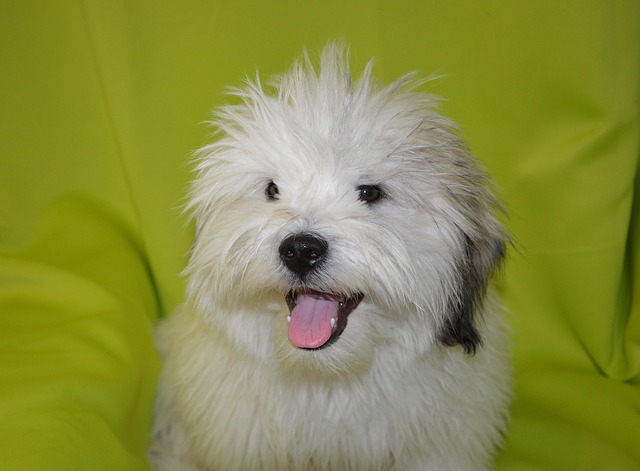
What should I do if there is redness around the eyes of a puppy
The morning light pours into the room through the window, and you prepare to greet the puppy warmly with a "good morning" as usual,
The sunshine shone on the carpet in the living room, but the usually lively and lovely Teddy went against his usual routine, constantly scratching his body with his paws and even rubbing against the floor. Pushing aside its soft fur, I suddenly noticed some small black spots wriggling - they were lice! At that moment, as the owner, my heart tightened instantly, feeling both heartbroken for being tormented by parasites and self blaming for not discovering it in time. Teddy dogs are the "treasure" of many families, they are petite and cute, accompanying us through countless happy moments. When these little creatures are troubled by lice, we must take immediate action, use professional knowledge and full of love, to help them get rid of the invasion of parasites and regain health and vitality.
Lice is a common ectoparasite that poses many health hazards to teddy dogs. These small insects feed on the blood of dogs and use their sharp mouthparts to pierce the skin, causing not only skin damage but also intense itching. Teddy dogs themselves have thick fur, making it difficult to thoroughly scratch the affected area when itching occurs. They can only keep rubbing and scratching, often causing their skin to turn red and even resulting in skin breakage and bleeding. Long term scratching may also lead to skin infections, causing more serious skin diseases such as folliculitis and eczema. Moreover, during the process of sucking blood, lice may also spread various pathogens such as Bartonella and Rickettsia. Once these pathogens enter the dog's body, they may cause systemic symptoms such as anemia, fever, and loss of appetite, seriously affecting the dog's health. Imagine Teddy, who was once lively and energetic, becoming listless due to the invasion of lice. As the owner, how could he not be anxious?
Once lice are found on a teddy dog, it is crucial to take effective pest control measures in a timely manner. There are various insect repellent products available on the market for lice, including topical insecticides, oral insecticides, and insect repellent collars. External deworming agents are commonly used choices, such as drops or sprays containing imidacloprid or non prednisolone ingredients. When using a dropper, first remove the hair from the neck to the back of the teddy dog to expose the skin, and then directly drop the medication onto the skin to ensure that it can penetrate the surface of the skin and kill lice. When using spray, wet the dog's entire body hair, paying special attention to areas such as the roots, ears, and abdomen that are prone to lice. However, avoid sensitive areas such as the dog's eyes, mouth, and nose. Generally speaking, topical deworming drugs can take effect within a few hours after use, killing most lice. However, due to the strong resistance of lice eggs, it is often difficult to completely eliminate them with a single dose of medication. It is necessary to follow the product instructions and reapply at regular intervals, usually every 7-14 days, to ensure that newly hatched lice are also completely eliminated.

Oral deworming drugs are also effective ways of deworming, such as those containing ingredients like milberoxime and moxifloxacin. These drugs are absorbed by the dog's digestive system and enter the bloodstream. When lice feed on the dog's blood, they ingest the drugs, thereby achieving the effect of killing lice. The advantage of oral deworming drugs is that they have a comprehensive effect, not only killing lice on the body surface, but also preventing and treating other parasites that may exist in the body. But when using oral deworming drugs, it is important to strictly control the dosage according to the dog's weight and veterinary advice. Overuse may cause damage to the dog's body. At the same time, some dogs may be resistant to oral medication. Owners can wrap the medication in their favorite food, such as a small piece of chicken or cheese, to allow the dog to take it smoothly.
The deworming collar is a long-lasting deworming method that contains slowly releasing deworming ingredients that can continue to function for a certain period of time, preventing lice from parasitizing again. When choosing a deworming collar, it is important to choose products with reliable quality and good reputation, and choose the appropriate size according to the size of the teddy dog to ensure that the collar is comfortable to wear and will not be too tight or too loose. However, the effectiveness of deworming collars may be affected by factors such as bathing and swimming, so it is important to observe carefully during use and use them in conjunction with other deworming methods if necessary.
In addition to using insect repellent products, cleaning and disinfecting the living environment of teddy dogs cannot be ignored. The eggs and larvae of lice may remain in dog beds, toys, carpets, and other places. If not cleaned up in a timely manner, it can easily lead to the recurrence of lice. Firstly, thoroughly clean the dog's bedding, toys, and other items by soaking them in hot water and then exposing them to sunlight. High temperatures and ultraviolet radiation can effectively kill lice and their eggs. For items that cannot be cleaned, such as carpets, sofas, etc., pet specific disinfectants can be sprayed to ensure that every corner is thoroughly disinfected. At the same time, it is necessary to regularly clean the indoor environment, keep it clean and dry, and reduce the living space for lice.
The care and patience of the owner are equally important in helping the teddy dog repel lice. The process of deworming may make dogs feel uncomfortable, especially when using topical medications, the smell of the medication and the application process may make them somewhat resistant. At this point, the owner should gently soothe and caress it, giving it a sense of security. Watching the dog, under its own care, gradually free itself from the troubles of lice and regain its former liveliness and cuteness, all the hard work and effort have become worthwhile.
Prevention is better than cure, and daily prevention work is essential to prevent teddy dogs from being attacked by lice again. Regularly deworming dogs, even if no lice are found, should be done in vitro once a month as recommended by a veterinarian. At the same time, it is important to avoid contact between dogs and stray animals, as stray animals are more likely to carry parasites and contact with them can easily lead to the spread of lice. In addition, keep the dog's body clean and take regular showers, but also pay attention to not taking showers too frequently to avoid damaging the skin's oil balance. Generally, it is advisable to take a shower every 1-2 weeks.
Teddy dogs are the warmest companions in our lives, filling our lives with loyalty and love. When they are troubled by lice, we are their strongest support. Through scientific pest control methods, careful environmental cleaning, and daily preventive measures, we can definitely help Teddy dogs stay away from lice and accompany us through every beautiful day healthy and happy.

The morning light pours into the room through the window, and you prepare to greet the puppy warmly with a "good morning" as usual,

Late at night, moonlight streamed into the room through the window, but the usually lively dog went against its usual routine,

The sunshine shone on the carpet in the living room, but the usually lively and lovely Teddy went against his usual routine,

The chewing behavior of dogs is as natural as wagging their tails to show goodwill. It is not only a way to explore the world, but also an outlet for releasing energy. However, some dog breeds are particularly prone to chewing.

Watching the dog constantly rubbing on the floor, frantically scratching its skin with its paws, its originally smooth fur became messy,

When night falls, a rapid bark suddenly comes from the community, or when we encounter a dog that barks continuously at people while walking,